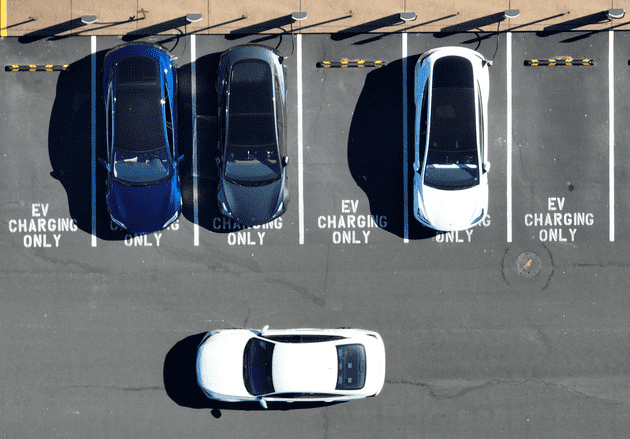Why America’s EV chargers keep breaking
Many electric vehicle chargers across the U.S. do not work properly, creating a significant challenge for the Biden administration’s agenda and a shift away from gasoline-powered cars.
Imagine living in a world where the gas station has trouble providing gasoline.
Every few times a driver fills up, something goes haywire — the gas doesn’t flow, or it flows fast for a while and then slows to a trickle. Other times, the credit card payment is mysteriously rejected or the screen is blank.
If the consumer wants a helping hand, too bad. In this world, the gas station has no human, and the only option is a 1-800 number. The gas pumps are alone in the middle of a big parking lot.
Swap the word “gasoline” for “electricity,” and this is a realistic description of what happens every day at electric-vehicle charging stations across the United States. The high-tech, high-speed highway fueling system that America is building to power its EVs and replace the gas station is riddled with glitches that are proving difficult to stamp out.
Individually, they are hiccups, but collectively, their consequences could be profound.
“It adds to the non-EV driver’s view of the world that EV charging is painful,” said Bill Ferro, a software expert and founder of EVSession, an EV charger analytics firm. “People feeling that it’s a risk to buy an EV because the fast-charging infrastructure stinks is going to slow down EV adoption.”
The problems are experienced by those who use fast chargers on the go and who aren’t driving Teslas. Studies and innumerable anecdotes describe the strange stumbles they encounter: a blank screen, a broken plug, a credit card payment that fails, sessions that abort without warning, electric current that flows fast this moment and slowly the next.
Behind the snafus are a daunting set of structural problems. They are tied to the peculiar way that EV chargers have evolved, and the fact that wires and batteries are way more complicated than what happens at the gas station.
“It’s a harder problem than pumping fuel from one reservoir into another,” Ferro said.
The problems are persisting even as billions of dollars pour into the charging sector from the federal and state governments, network operators and automakers.
Several recent studies of the charging system have found discouraging results.
Last year, researchers visited every public fast charger in the San Francisco Bay Area and found that almost 23 percent of them had “unresponsive or unavailable screens, payment system failures, charge initiation failures, network failures, or broken connectors.” And in a survey of EV drivers, the auto consultancy J.D. Power found the public charging network “plagued with non-functioning stations.” One in five sessions failed to deliver a charge. Almost three-quarters of those failures involved a station that malfunctioned or was offline.
Realizing the urgency of a fix, a variety of public and private players are trying out solutions.
The Biden administration, for example, set standards for “uptime,” or the percentage of time a charger is operational. California is launching a major inquiry into how to improve the customer experience. Automaker Ford Motor Co. last year deployed its own squad of station auditors. The largest public network, Electrify America, is replacing a fifth of its stations with newer models.
But many of these actions work at the edges of a black hole.
No one can define what it means for an EV driver to have a satisfactory charging experience. No underlying data exists. As hundreds of thousands of Americans buy EVs and start traveling the highways, this lack of a yardstick means that no one is accountable. Without accountability, problems are likely to persist.
The concern for industry is that the swelling ranks of EV drivers will tell their friends that highway charging is a little buggy, a little annoying — just enough of a hindrance that those millions of friends hold off from going electric, while the planet steadily warms.
Post time: May-10-2023









